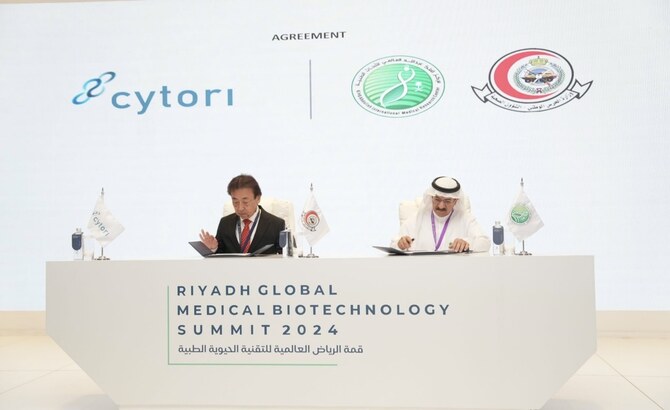TAIPEI: Taiwan’s Foxconn is exploring the sale of its new $8.8 billion display panel factory in China, people familiar with the matter told Reuters, as demand for the product wanes amid an intensifying US-China trade war.
Foxconn, formally known as Hon Hai Precision Industry, is in talks to appoint banks to find a buyer for its liquid crystal display (LCD) factory that is being built in the southern Chinese city of Guangzhou, said two people with direct knowledge of the matter.
A sale would come at a delicate time for Foxconn, which has extensive investments in China, a large roster of US clients that includes Apple Inc, and is having to navigate a tricky path amid the protracted trade war between Washington and Beijing. It would mark one of its largest divestments from China. Foxconn’s discussions are at an initial stage and it has not yet come up with a price tag for the so-called Gen-10.5 facility specializing in large-screen LCDs, the sources said, adding a sale was not a surety.
“It’s not an easy sale and it could take a while,” said one of the sources, citing tepid global demand for large-screen LCDs.
Foxconn, in a written statement to Reuters, said: “As a matter of company policy, Foxconn does not respond to market rumors or speculation.” The sources requested anonymity because the deliberations are confidential.
HIGHLIGHTS
• Foxconn in talks to appoint banks for sale.
• Discussions at early stages, sale not a surety.
• Plant won’t start production until early October.
US President Donald Trump sharply raised the stakes in the bruising trade war with China and jolted global financial markets by vowing on Thursday to impose a 10% tariff on $300 billion of Chinese imports from Sept. 1.
The trade war has disrupted technology global supply chains in a major way, forcing Foxconn to review its own. That and slowing demand for large-screen televisions and monitors prompted Foxconn’s management to seek a buyer for the LCD plant, one of the sources familiar with the management’s thinking said.
Questions were also being raised within Foxconn on the need for the Guangzhou project. “Existing plants are already not running at full capacity ... Did they need another one?” the source said.
The second source said the new factory would not go into production until early October, which makes it less appealing for buyers because of the additional risks as compared to an already operating plant.
The Nikkei daily reported earlier this year that the company would delay most of its planned production in Guangzhou for a minimum of six months, but Foxconn said the project was on schedule.
Dubbed the largest single investment ever in the southern city by Chinese media, Foxconn announced the Guangzhou plant in 2016, hoping to start operations by 2019 to meet an expected rise in demand for large-screen TVs and monitors in Asia in a challenge to top Chinese display maker BOE Technology Group .
The project was mainly run by a joint venture between the Guangzhou government and Japan’s Sakai Display Products, an advanced panel factory owned by Foxconn founder Terry Gou and Japan’s Sharp Corp, Foxconn’s display unit.
The Japanese panel maker said on Thursday it would build a plant in Vietnam to make flat screens and electronic devices to guard against additional US import tariffs on Chinese goods.
The global display industry has been struggling with a supply glut and tumbling earnings due to moribund sales of televisions and smartphones, and the worsening trade dispute that could raise product prices and dampen consumer demand.
Sharp reported on Thursday a double-digit decline in profit for the quarter ended June due to sluggish tech demand.
Taipei-based Foxconn said in April that it remained committed to building a display plant and tech research facilities in Wisconsin amid growing skepticism about the fate of the $10 billion project. Trump had cited Foxconn’s Wisconsin plans as proof he was reviving American manufacturing.
But Foxconn is already under the spotlight for having failed so far to meet job-creation targets in Wisconsin.
The company told Reuters earlier this year it was reconsidering plans to make advanced LCD panels at Wisconsin.




























